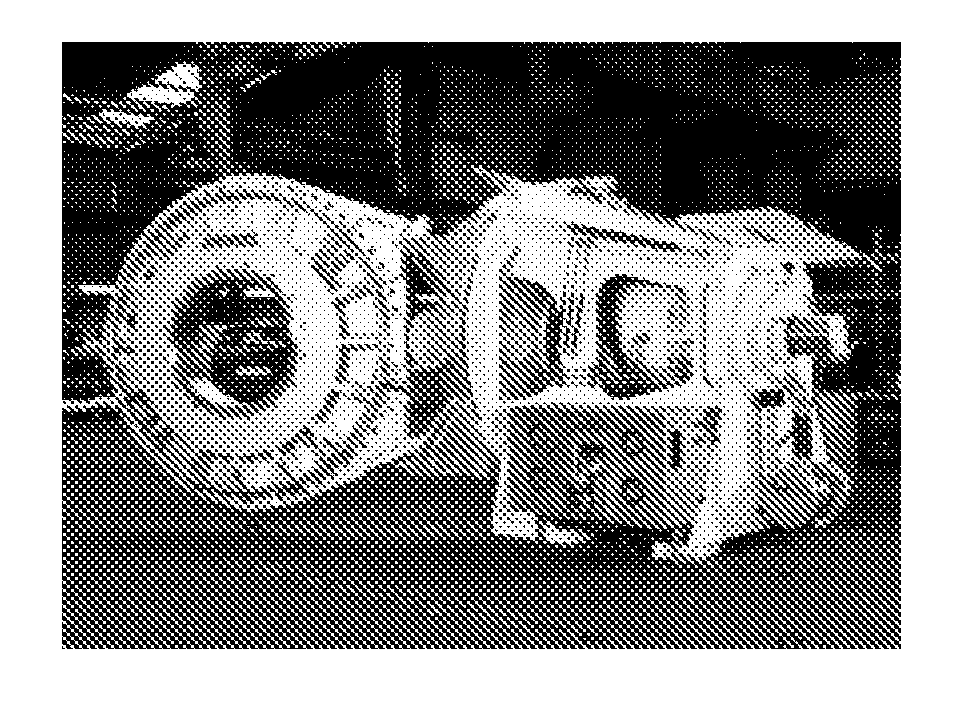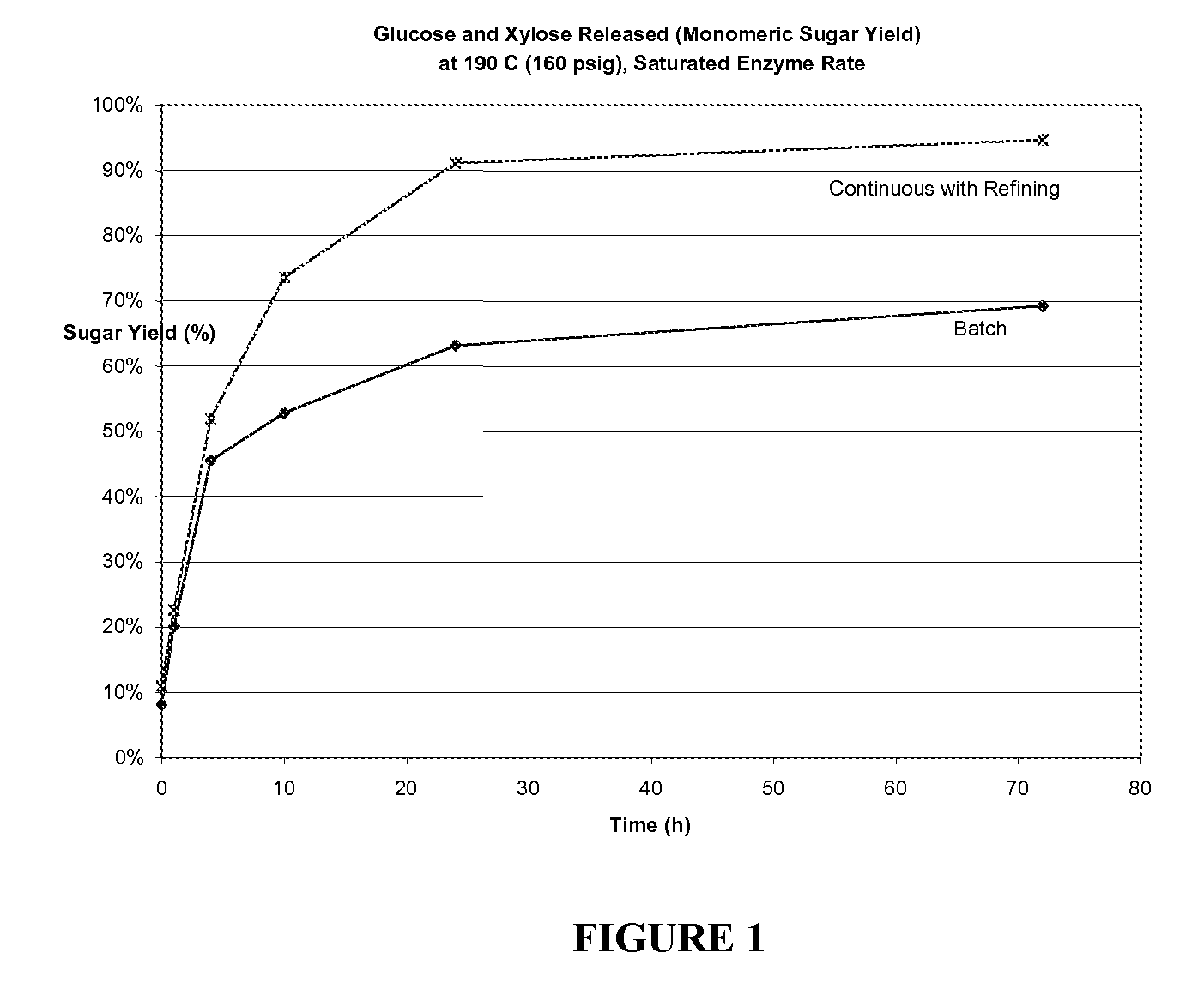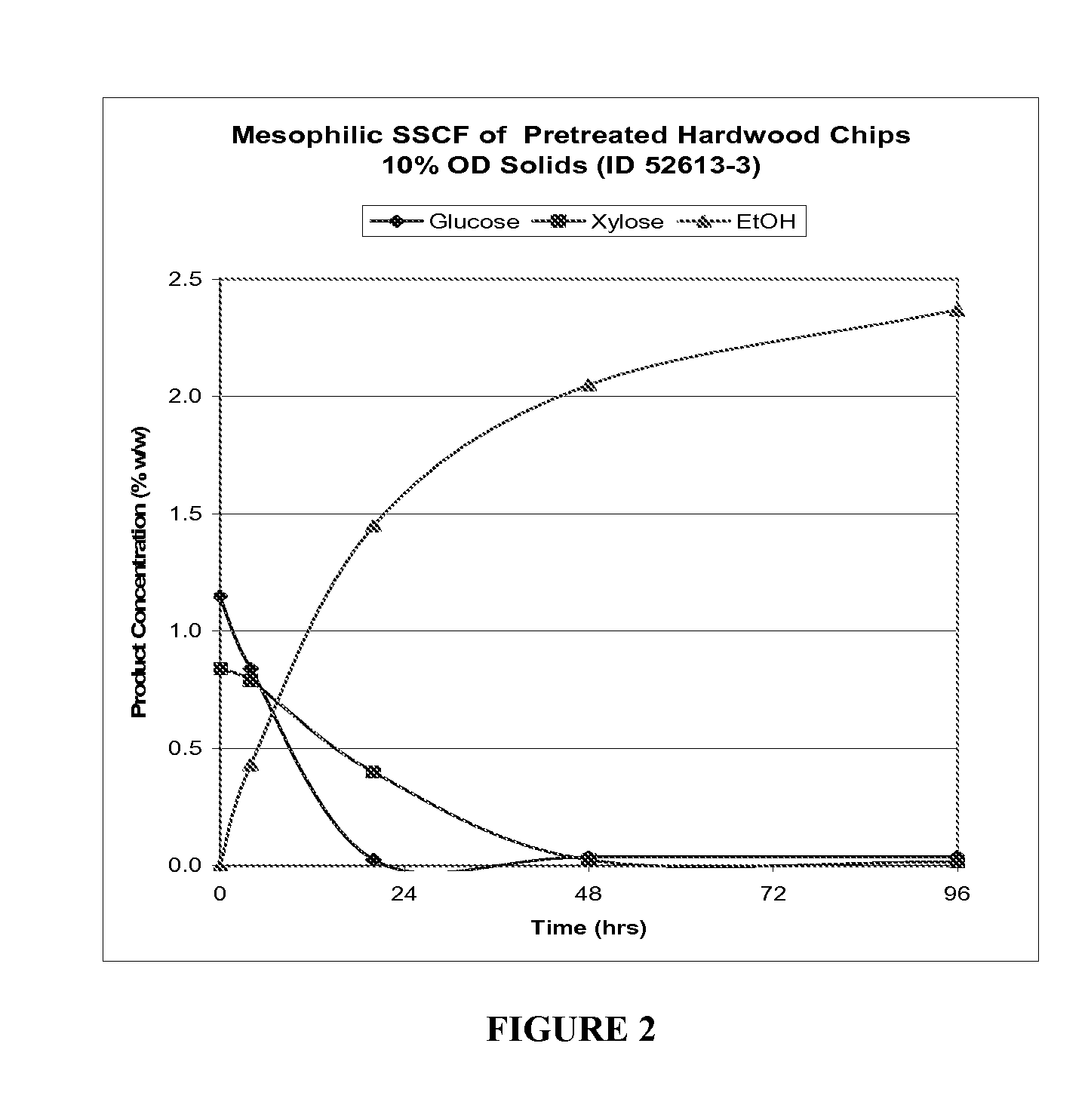Combined thermochemical pretreatment and refining of lignocellulosic biomass
a thermochemical and biomass technology, applied in biofuels, pretreatment with water/steam, finely divided materials, etc., can solve the problems of greater yield and/or rate of formation of monomeric sugars and thence ethanol from fermentation, and achieve the effect of reducing the amount of unwanted by-products, minimizing or eliminating, and high ethanol yield
- Summary
- Abstract
- Description
- Claims
- Application Information
AI Technical Summary
Benefits of technology
Problems solved by technology
Method used
Image
Examples
example
[0048]Enzymatic hydrolysis was run with excess enzyme in order to determine theoretical maximum yield of monomeric sugars using the lignocellulosic material that has been pretreated using steam hydrolysis and passed through a refiner. The percentages reported in Table 1 combine released glucose and xylose.
[0049]Hardwood chips were subjected to steam hydrolysis at 160 psig between the resident time of 5 to 10 minutes in a 2 odtpd mechanical pulping system from Andritz. The pretreated lignocellulosic material was reduced in size at the outlet of the system at an elevated temperature of about 188° C. at 160 psig. The refined lignocellulosic materials were then released and depressurized into a separate collection vessel. Subsequently the materials were subjected to enzymatic hydrolysis using cellulase and xylanase enzymes. The maximum theoretical sugar yield of the trial (Method 1) is compared to various pretreatment methods as listed in Table 1.
TABLE 1Comparison of maximum theoretical...
PUM
| Property | Measurement | Unit |
|---|---|---|
| Temperature | aaaaa | aaaaa |
| Temperature | aaaaa | aaaaa |
| Time | aaaaa | aaaaa |
Abstract
Description
Claims
Application Information
 Login to View More
Login to View More - R&D
- Intellectual Property
- Life Sciences
- Materials
- Tech Scout
- Unparalleled Data Quality
- Higher Quality Content
- 60% Fewer Hallucinations
Browse by: Latest US Patents, China's latest patents, Technical Efficacy Thesaurus, Application Domain, Technology Topic, Popular Technical Reports.
© 2025 PatSnap. All rights reserved.Legal|Privacy policy|Modern Slavery Act Transparency Statement|Sitemap|About US| Contact US: help@patsnap.com



